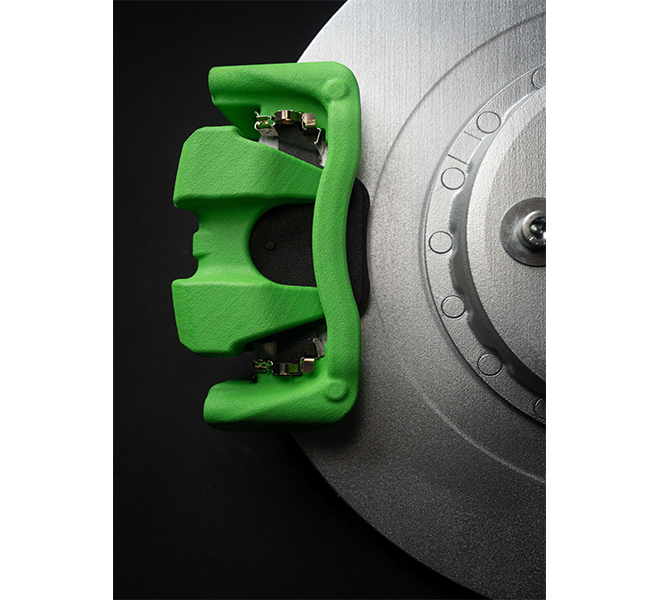As EVs move into the mainstream, companies are looking for ways to improve every component of a vehicle in order to squeeze out more range and/or better performance. The latest innovation comes from Continental, whose new Green Caliper for disc brakes is more compact and lighter than those for legacy vehicles, but boasts the same deceleration power.
Continental says the lower mass (up to two kilograms less per brake caliper, plus up to three kilograms less per brake disc) and the reduced friction between brake pad and disc combine to deliver increased range.
The brakes in an EV tend to be activated much less frequently than those in a legacy vehicle, thanks to regenerative braking, so their thermal load is lower. However, because of the EV’s greater weight, the deceleration performance of the brakes often needs to be even higher. Continental has optimized the new brake caliper design for this changed profile.

Continental explains that up to around 0.3 g of deceleration—in the “comfort braking range”—an EV hardly needs its foundation brake. Beyond this point is the “blending area”—the seamless transition between regeneration and foundation brake use controlled by the electronic brake system. The foundation brake is only active on its own during emergency braking. Continental’s developers analyzed this profile and designed the Green Caliper accordingly. Its cast iron fist caliper is more compact, and the brake pads are smaller and thinner, as they wear out more slowly. This allows the mass of the caliper to be reduced. The smaller brake caliper also enables the use of a larger cast iron brake disc. Due to the reduced thermal load, the disc can be made significantly thinner, which saves more weight. As the brake engages further out on the larger disc and thus achieves high deceleration power with the same clamping force due to the longer lever arm, braking performance is optimal.
In the interest of driving efficiency, the Green Caliper also actively retracts the brake pads after each braking action. This reduces the residual brake torque between the pads and the disc to less than 0.2 newton-meters.
“Increasing efficiency is a primary goal in the optimization of electric vehicles. The lower the loss of electrical energy, the greater the range of the vehicle,” says Dominik Hiss, Head of Product Center Friction Brakes, Hydraulic Brake Systems at Continental. “Brakes can make a contribution to this that has not been exploited to date. With the new Green Caliper, we are providing a production-ready technology that unlocks additional potential for the range of an electric car.”
Source: Continental


















































































